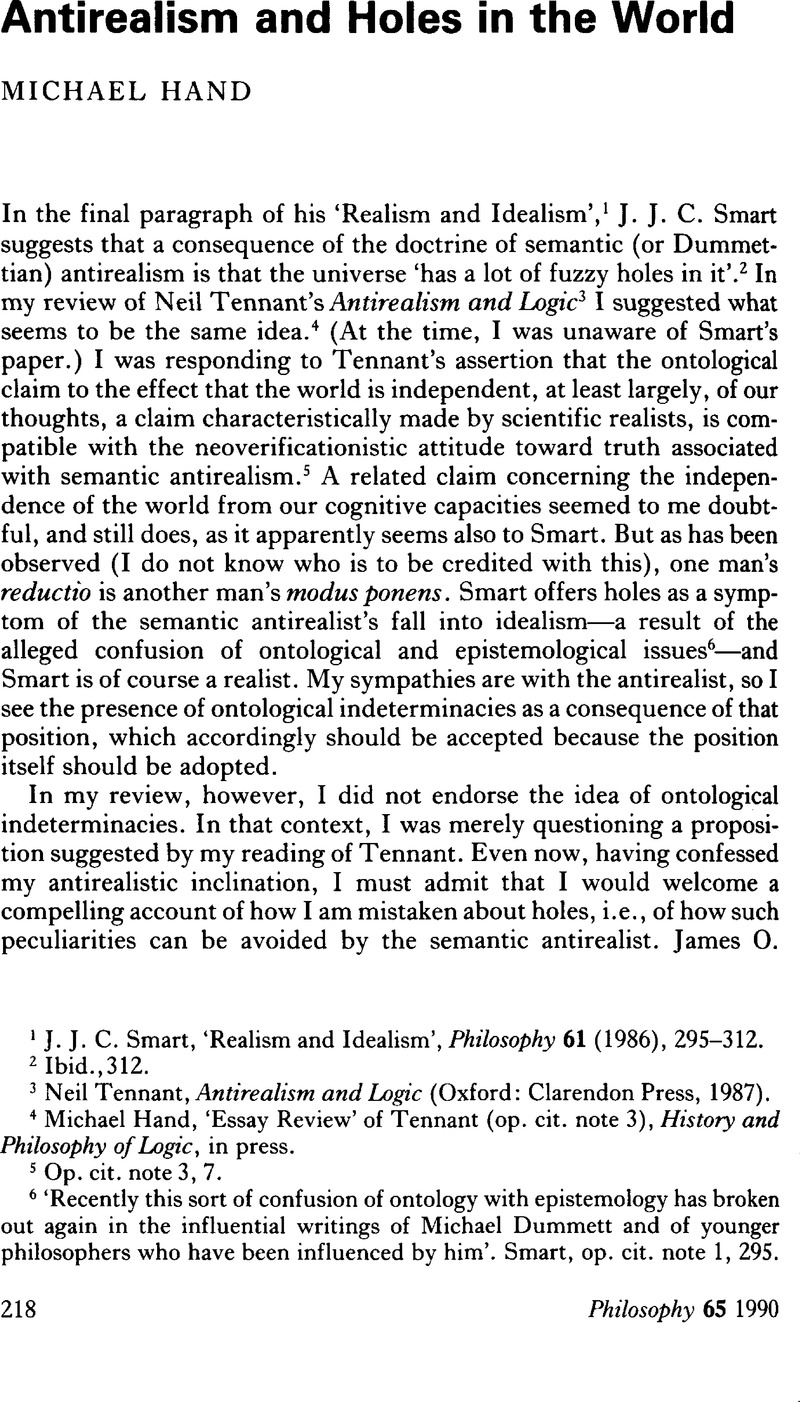No CrossRef data available.
Published online by Cambridge University Press: 30 January 2009

1 Smart, J. J. C., ‘Realism and Idealism’, Philosophy 61 (1986), 295–312.CrossRefGoogle Scholar
2 Ibid., 312.
3 Tennant, Neil, Antirealism and Logic (Oxford: Clarendon Press, 1987).Google Scholar
4 Hand, Michael, ‘Essay Review’ of Tennant (op. cit. note 3), History and Philosophy of Logic, in press.Google Scholar
5 Op. cit. note 3, 7.
6 ‘Recently this sort of confusion of ontology with epistemology has broken out again in the influential writings of Michael Dummett and of younger philosophers who have been influenced by him’. Smart, , op. cit. note 1, 295.Google Scholar
7 Young, James O., ‘Meaning and Metaphysical Realism’, Philosophy 63 (1988), 114–118.CrossRefGoogle Scholar
8 Smart, , op. cit. note 1, 312.Google Scholar
9 Young, , op. cit. note 7, 117.Google Scholar
10 Dummett, Michael, ‘The Justification of Deduction’, in his Truth and Other Enigmas (Cambridge, MA: Harvard University Press, 1978), 290–318Google Scholar. On p. 314, Dummett writes that ‘The relation of truth to the recognition of truth is the fundamental problem of the theory of meaning, or, what is the same thing, of metaphysics;…’ (my emphasis).
11 Young, , op. cit. note 7, 117.Google Scholar
12 Dummett, Michael, ‘What is a Theory of Meaning? (II)’ in Evans, Gareth and McDowell, John (eds), Truth and Meaning: Essays in Semantics (Oxford: Clarendon Press, 1976), 120.Google Scholar
13 Ibid., 115.